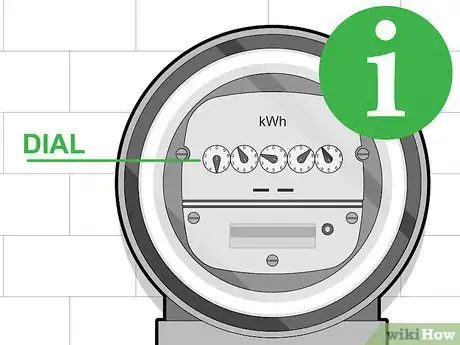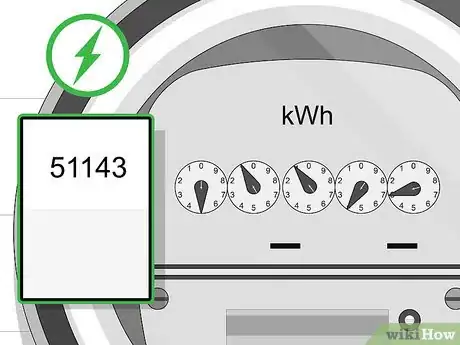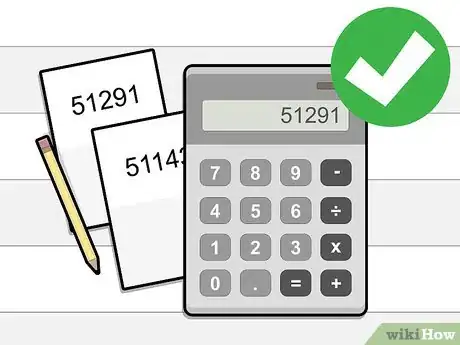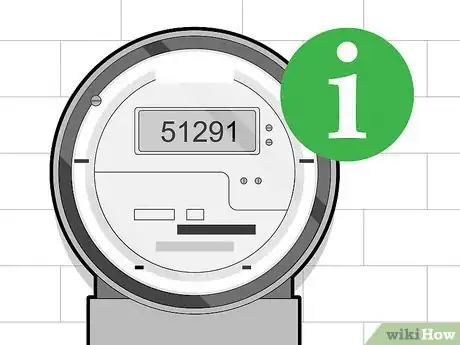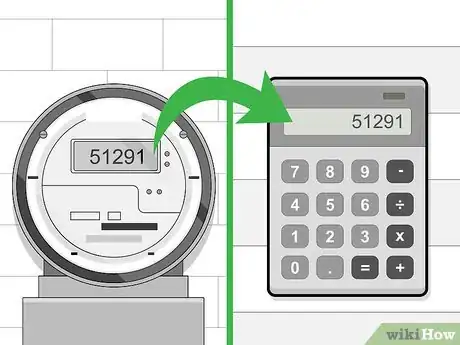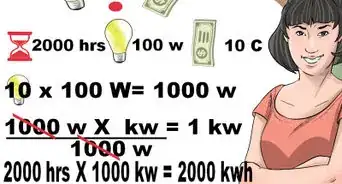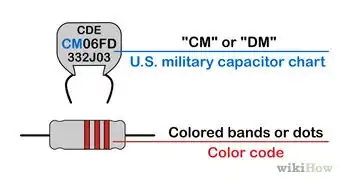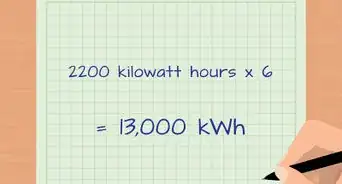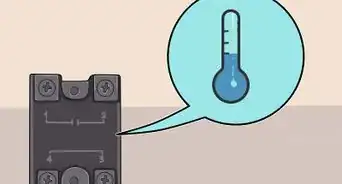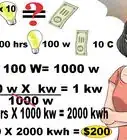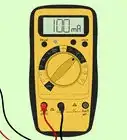This article was co-authored by Ricardo Mitchell. Ricardo Mitchell is the CEO of CN Coterie, a fully licensed and insured Lead EPA (Environmental Protection Agency) Certified construction company located in Manhattan, New York. CN Coterie specializes in full home renovation, electrical, plumbing, carpentry, cabinetry, furniture restoration, OATH/ECB (Office of Administrative Trials and Hearings/Environmental Control Board) violations removal, and DOB (Department of Buildings) violations removal. Ricardo has over 10 years of electrical and construction experience and his partners have over 30 years of relevant experience.
There are 8 references cited in this article, which can be found at the bottom of the page.
This article has been viewed 444,610 times.
The dials and numbers on an electric meter can seem really perplexing if you don't know what you're looking at. If you're confused, you're not alone! Fortunately, even though electric meters look hard to read, they're actually very simple to figure out. This article will walk you through everything you need to know, including what the numbers on your meter mean, whether you have an analog or digital electric meter.
Things You Should Know
- Your electric meter's dials read out the amount of electricity you're using. The measurement is given in kilowatt hours.
- Read your dials from left to right, just like you would a book or a set of numbers. If the dial is caught between 2 numbers, go with the smaller number.
- Calculate the kilowatt hours you've used since your last electric bill. To do this, subtract your current reading from your last reading.
Steps
Reading an Analog Electric Meter
-
1Understand the parts of your analog meter (also known as a dial meter) and how it works. Your electric meter usually has between four and six dials that advance as a central disk turns.[1] The disk is turned by the electricity passing through the meter, giving a readout of how much electricity you are using. [2]
- This readout is given in kilowatt hours. One kilowatt hour is equal to the amount of energy it would take to power a 100 watt lightbulb for 10 hours.[3]
- There may be a variety of words and numbers printed on the face of your electric meter. While these are not important in determining your electric usage, they do give you information about the mechanical details of your meter.
-
2Read the dials on your meter. Read them from left to right, just as you would if you were reading a book or a set of numbers. Begin on the left, writing the numbers down as you go. After you mark a number for each dial across, you have the electric meter reading.
- Do not let the direction of the numbers on each dial confuse you. Some of the dials will be numbered clockwise and other dials may be numbered counterclockwise.
- Look exactly where the arrow is pointing. If the arrow is pointing between 2 numbers, the reading is the smaller number. If the arrow is pointing directly on a number, verify what the number should be by referencing the dial to the right of it. If the arrow on that dial is past zero, the reading on the dial to the left is the number the arrow is pointing to. If the arrow on the right hand dial is not to or past the zero yet, the reading on the dial to the left is the previous number.
Advertisement -
3Find out how your electric company reads the last dial. Some companies round up to the next highest number. Other companies record the number that the arrow is closest to. If you are interested in calculating your kilowatt hours on your own and getting a calculation close to what the electric company does, it is beneficial to know how the company reads this last number.
-
4Calculate the kilowatt hours you have used. Most electric companies do not reset the meter to zero after every reading. This means that in order to calculate the number of kilowatt hours you have used, you need to keep track of consecutive readings. Subtract the current reading from the last reading you were billed for to get the most recent kilowatt hours used.
Reading a Digital Electric Meter
-
1Understand the different parts of your meter. A digital electric meter records the amount of electricity your household is using electronically. Thus, a digital electric meter is much simpler to read than a traditional meter because it has fewer readings to decipher.[4]
- Unlike traditional analog electric meters, many digital meters transmit your meter reading wirelessly to the electric company via radio frequencies. This means that you will not have a meter reader come to your house to read your meter. If you prefer to keep your traditional meter, it may be possible in some municipalities to avoid having a new "smart" meter installed.[5]
-
2Read the numbers on your meter. Your meter should have a digital readout that gives you one long series of numbers. The exact configuration on this readout will vary depending on the manufacturer and the readout could include .[6] [7]
- Contact your electric company to get information about your meter if you cannot figure out how to read it on your own.
- Your electric meter may have a few other numbers displayed, including power status for the meter and reference numbers for the electric company.[8] Remember to only pay attention to the large central string of numbers when trying to figure out your electric usage.
Advertisement -
3Calculate the kilowatt hours you have used. Digital electric meters do not reset after every reading. This means that in order to calculate the number of kilowatt hours you have used, you need to keep track of consecutive readings. Subtract the current reading from the last reading you were billed for to get the most recent kilowatt hours used.
Community Q&A
-
QuestionWhen would you need to read your electric meter?
 Ricardo MitchellRicardo Mitchell is the CEO of CN Coterie, a fully licensed and insured Lead EPA (Environmental Protection Agency) Certified construction company located in Manhattan, New York. CN Coterie specializes in full home renovation, electrical, plumbing, carpentry, cabinetry, furniture restoration, OATH/ECB (Office of Administrative Trials and Hearings/Environmental Control Board) violations removal, and DOB (Department of Buildings) violations removal. Ricardo has over 10 years of electrical and construction experience and his partners have over 30 years of relevant experience.
Ricardo MitchellRicardo Mitchell is the CEO of CN Coterie, a fully licensed and insured Lead EPA (Environmental Protection Agency) Certified construction company located in Manhattan, New York. CN Coterie specializes in full home renovation, electrical, plumbing, carpentry, cabinetry, furniture restoration, OATH/ECB (Office of Administrative Trials and Hearings/Environmental Control Board) violations removal, and DOB (Department of Buildings) violations removal. Ricardo has over 10 years of electrical and construction experience and his partners have over 30 years of relevant experience.
Electrician & Construction Professional, CN Coterie I can't necessarily think of a scenario where you'd need to do this. The information on your meter is important to your electric company, but they'll send a crew out to read the meter if they need it. It's likely not going to come up very often for you.
I can't necessarily think of a scenario where you'd need to do this. The information on your meter is important to your electric company, but they'll send a crew out to read the meter if they need it. It's likely not going to come up very often for you. -
QuestionCan a submeter be reset?
 Community AnswerNo, a submeter cannot be reset and you should not tamper with it.
Community AnswerNo, a submeter cannot be reset and you should not tamper with it. -
QuestionWhich number between 9 and 0 do I use?
 Community Answer0 is actually 10. Always select the smaller number. So if the dial is between 9 and 0, you'd write down 9.
Community Answer0 is actually 10. Always select the smaller number. So if the dial is between 9 and 0, you'd write down 9.
References
- ↑ http://visual.merriam-webster.com/house/electricity/electricity-meter.php
- ↑ http://www.popsci.com/diy/article/2009-10/electric-meter-dissection/?image=1
- ↑ http://www.duke-energy.com/pdfs/MyHER%20What%20is%20a%20Killowatt-Hour%20Energy%20Chart.pdf
- ↑ http://www.sdge.com/residential/about-smart-meters/how-read-your-smart-meter
- ↑ http://www.technologyreview.com/news/427497/rage-against-the-smart-meter/
- ↑ http://www.pge.com/en/myhome/customerservice/smartmeter/reading/index.page
- ↑ Ricardo Mitchell. Electrician & Construction Professional, CN Coterie. Expert Interview. 6 May 2020.
- ↑ https://www.psoklahoma.com/save/SmartMeters/Howtoreadmeter.aspx
About This Article
To read a digital electric meter, read the series of large numbers near the center of your meter and write them down. If you wish to calculate how many kilowatt hours you’ve used in the last month, subtract the current reading from the previous reading, which should be stated on your most recent bill. For more tips on reading meters, like how to read analog electric meters, keep reading!
